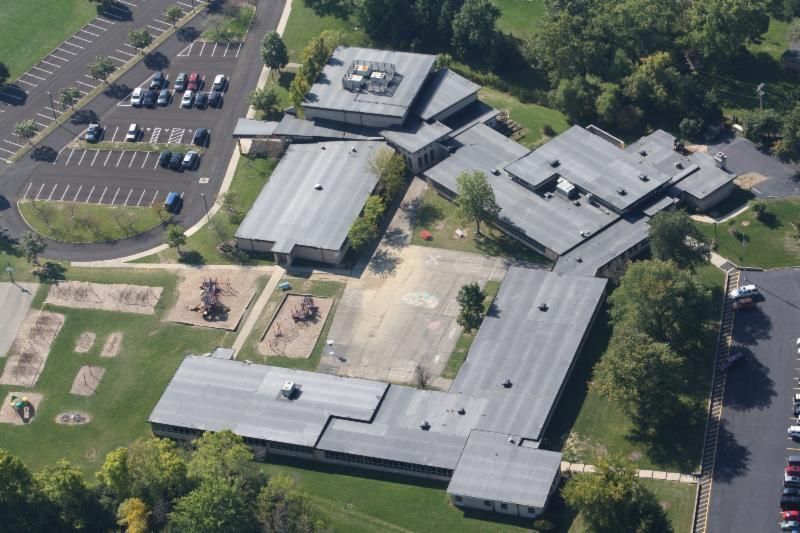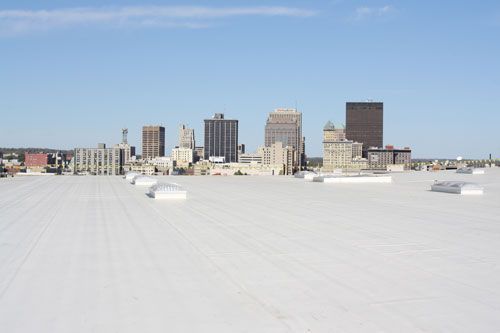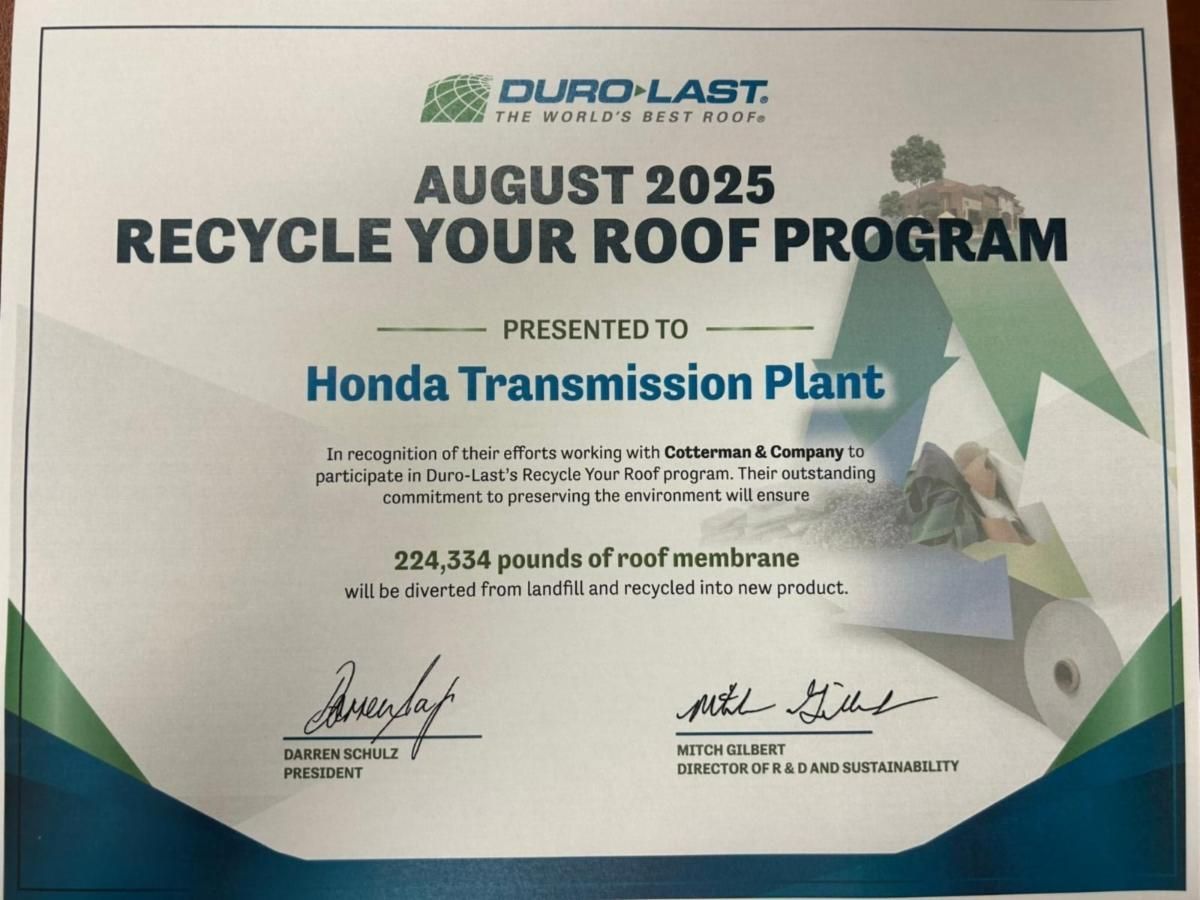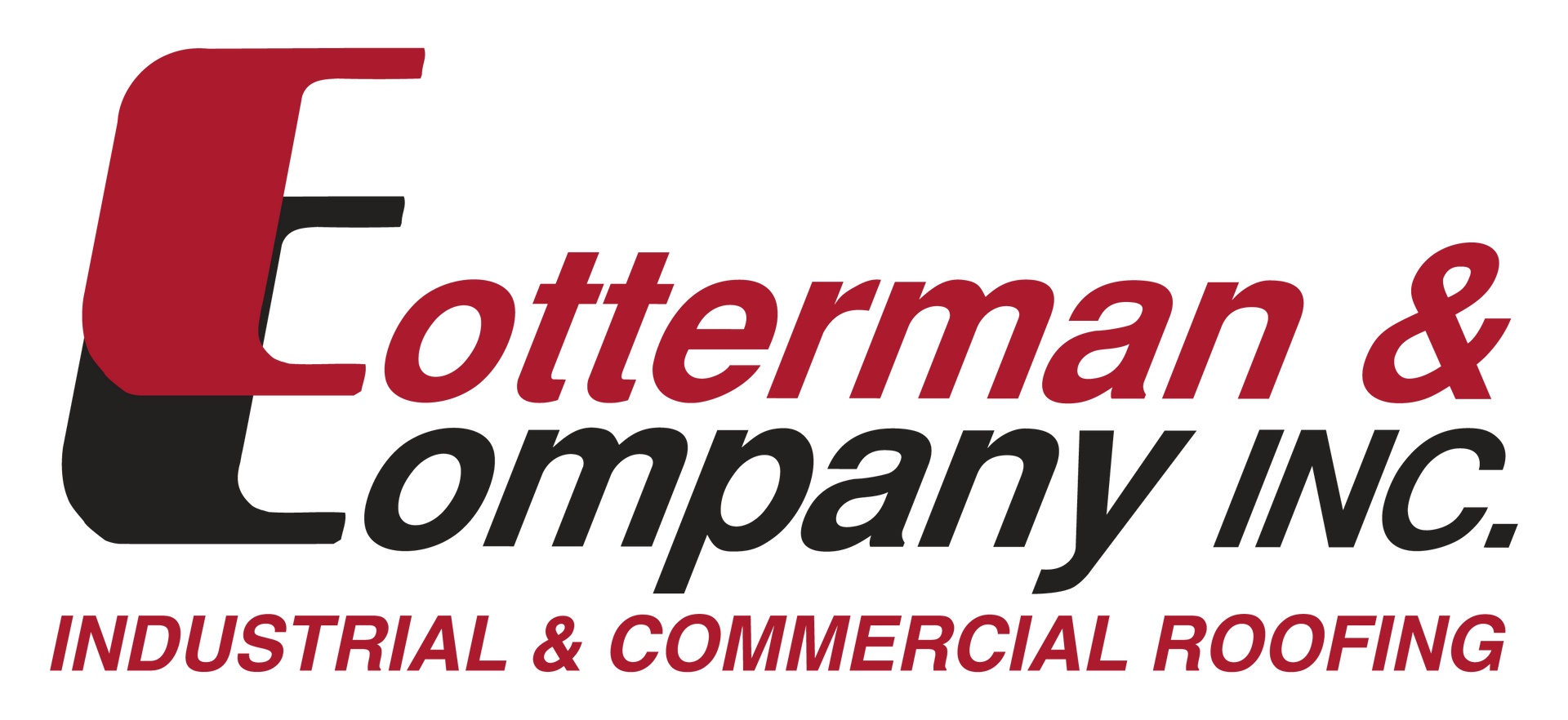Tapered Insulation in Commercial Roofing


Tapered Insulation in Commercial Roofing – Function Meets Efficiency:
At Cotterman & Company Inc., we’re not just about installing roofing systems, we’re about building smart, long-lasting solutions tailored to your facility’s unique needs. One critical component in many commercial and industrial roof systems is tapered insulation. Whether your building is brand new or decades old, understanding when and why to use tapered insulation is key to protecting your investment.
Slope Starts at the Deck
In many commercial and industrial buildings, slope is engineered directly into the roof deck during construction. Decking materials like steel, wood, concrete, and tectum are commonly used, and in many cases, these are designed to provide a slope toward drains or scuppers.
However, not all decks are sloped, and when they’re flat, water has nowhere to go. This is where tapered insulation comes in. It allows us to add slope above the deck, using the insulation itself to guide water toward the roof’s drainage system.
What Is Tapered Insulation?
Tapered insulation is a customized system usually made of polyisocyanurate (polyiso) or expanded polystyrene (EPS) that’s cut and configured to direct water toward drains, gutters, or downspouts. The insulation is designed specifically for the roof layout of the building, and it can be installed in one of two ways:
- Mechanically fastened to the roof deck
- Adhered using adhesives, which is common when slopes grow in depth and board sizes increase
Custom Slope Options
Tapered insulation systems can be built to slope:
- 1/8” per foot
- 1/4” per foot
- 1/2” per foot
These gradual slopes ensure positive drainage, which helps avoid standing water, premature membrane aging, and structural stress.
As the slope increases, the insulation boards become thicker, which often requires longer fasteners or additional adhesives. That added thickness is also where tapered insulation starts to make a big impact on thermal performance.
Energy Code & R-Value Benefits
Ohio’s energy code requires a minimum R-30 insulation value on low-slope commercial roofs. Tapered insulation systems often exceed this baseline because of their layered build-up boosting energy efficiency and comfort within the facility.
However, that added thickness and customization come at a cost. Tapered systems typically cost more upfront than straight insulation on a sloped deck. But the long-term benefits, improved drainage, higher R-value, and better protection can make it a smart investment.
Maintenance Matters
Like all roofing systems, a tapered insulation system needs to be protected. Routine preventative maintenance can:
- Prevent water intrusion
- Preserve the insulation’s thermal performance
- Keep the roof eligible for a future overlay, avoiding the expense of a full tear-off and replacement
Final Thoughts
Tapered insulation is a powerful tool in flat and low-slope roofing solving drainage issues while boosting performance. Whether you’re designing a new facility or addressing problems on an existing roof, Cotterman & Company is ready to help you determine the right solution.
Need a roof evaluation?
Let our team design a system that works for your building. Contact us today to get started.


